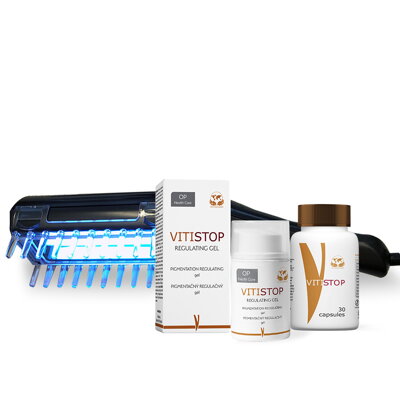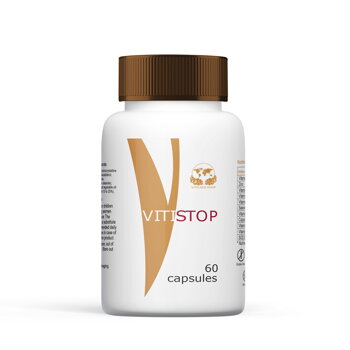Vitiligo in brief
In the following article, we want to bring you some interesting facts about vitiligo, which we have obtained so far from several professional sources.

A miracle cure?
Unfortunately, there is no miracle cure for vitiligo that, after taking it will repigment all the white spots on our skin and stop its spread. However, years later, we came up with methods that will help us fight vitiligo and which have proven to be effective. In many cases, it was possible to reverse the spread of vitiligo and repigment large areas of white spots.
Since there are different types of vitiligo and also the origin of vitiligo in people is different, something different can work for each of us in treatment. Some people get vitiligo because they have another autoimmune disease, some because they are under extreme stress, and others just because they inherited it genetically. Therefore, each of us should start by trying to find the cause of this disease and then do everything to eliminate it and thus slow down, even stop the progress of this disease.
Vitiligo in brief
1. Vitiligo is an acquired skin depigmentation disorder. It occurs in 1-2% of the population. In 30 - 40% it has a familial incidence. Read more about what vitiligo is and how it develops in our article: "What is Vitiligo".
2. Up to 25% of people with vitiligo have at least one other autoimmune disorder, such as:
Crohn's disease (an inflammatory bowel disease)
Type 1 diabetes (affects the production of the blood sugar-regulating hormone insulin)
Rheumatoid arthritis (inflammation of the joints and other body tissues)
Psoriasis (a chronic inflammatory skin condition)
Thyroid disease (affects the thyroid)
Pernicious anemia (affects the absorption of vitamin B12)
Systemic lupus erythematosus (chronic inflammation of many body organs and tissues)
3. Fresh vitiligo is the easiest to repigment due to the memory trace of melanocytes, so do not postpone the treatment of vitiligo for later and as soon as you notice a white spot, you should be professionally examined by your dermatologist to confirm that it is vitiligo.
4. The pigment is drawn from the roots of the hairs, the surrounding healthy skin, but also from the memory trace of melanocytes. Therefore, during irradiation or by tanning in the sun, the first repigmentation occurs around the hairs and we recommend not to stop the treatment, because there is a high probability that the white spot will repigment faster. We described more about the treatment of vitiligo in the article: "Recipe for vitiligo".
5. Fingers and toes (ankles/knees) are the most difficult to repigment due to low blood supply and small pigment reserves, on the other hand, the face is repigmented the fastest.
6. The first vitiligo often appears on bony places such as fingers and toes, elbows, knees, ankles. These are typical places for vitiligo, but they gradually spread to other places, such as the armpits, neck, around the genitals and of course on the face.
7. NOT every white spot is vitiligo. You can read more in our article, where we described the most common similar pigmentary disorders of the skin, which may appear as Vitiligo, but it is a completely different skin disease.
8. Vitiligo must be dealt with comprehensively, with lifestyle and vitamin support.
9. The first beginnings of vitiligo as well as the spread of vitiligo are largely caused by stress: "Vitiligo and stress".
10. The gentle burning of vitiligo provokes a repigmentation process in the body, and UVB phototherapy works on the same principle: "Phototherapy - light treatment".
11. Repigmented spots can disappear again, so it is recommended not to stop with a healthy lifestyle and occasionally apply Protopik / use Vitistop tablets as a preventive measure.
12. New spots of vitiligo often arise as a result of physical, mechanical or chemical irritation or injury - Koebner's phenomenon (this is also often manifested in psoriasis). However, fresh scars can be easily re-pigmented and therefore Protopic & Vitistop gel should be used as long as the wounds are not festering.
13. Vitiligo can be associated with other autoimmune diseases (thyroid disorder, Crohn's disease, diabetes, etc.) and therefore it is recommended to do all the necessary examinations to find out the cause of vitiligo. Of course, heredity plays a big role in the development of vitiligo, as we already mentioned in point 1.
14. Tattooing - it has no effect on the spread of vitiligo and on the contrary, it is very popular especially among people with vitiligo to cover up their spots and thus create interesting creations on their body.
15. Complete depigmentation is generally recommended especially for people with more than 80% extent of vitiligo (white areas). Some doctors also recommend it in cases where more than 50% of the body surface is affected. However, depigmentation therapy is permanent after treatment. Michael Jackson also underwent full-body depigmentation.
16. Having vitiligo does not mean that your immune system is weak, it actually means that it is too strong. There is a high probability that you will not be more susceptible to viruses or you will overcome common diseases with greater ease. Some of the patients report getting fewer infections than their friends and family, and this may reflect the fact that the immune system is overactive. Because the immune system is hyperactive in a small aspect (against melanocytes), it does not necessarily mean that it is strong in all aspects. So every aspect is probably a little different.
17. The length of vitiligo treatment is individual and depends on the size of the lesions and their distribution on the body. Therefore, the treatment ranges from 4 to 14 months. Your body's response to the treatment process is important, based on it it is then decided whether the treatment still makes sense or if it should be stopped. In some cases, it takes a few months for the first brown dots to appear, so you have to be patient and wait until the repigmentation process of vitiligo is fully underway.
18. The most effective treatment for vitiligo is currently a combination of:
- UVB light with a wavelength of 311 nm (in the summer, the UVB lamp is replaced by the SUN)
- Prescription immunomodulators - prescription ointments
- Vitistop gel
- Vitistop tablets
- Good lifestyle (hardening, quality sleep, sport, healthy diet...)
How to proceed with the treatment can be found in our E-book: The HOME TREATMENT!
OPZELURA cream (Ruxolitinib) – new, currently the most powerful cream for the treatment of vitiligo, which is currently awaiting approval by the European Medicines Commission. We believe, that the cream will be approved as soon as possible and will be affordable for everyone.
19. Vitiligo in children – Treatment is the same as in point 17, with the difference that children are given a weaker version of immunomodulators 0.03% ointment. Vitistop tablets are also not suitable for children under 12 years of age and are therefore replaced by weaker Vitix tablets. We described more in our article: Vitiligo in children.
In the event that we gain new knowledge or interesting facts about vitiligo that will help us approach the treatment of vitiligo, we will update this article.
We are keeping our fingers crossed for the repigmentation of your spots.
In case of any questions, do not hesitate to contact us.
Your Vitiligoshop team
I WANT TO BUY SOME OF THE PRODUCTS
.jpg)


